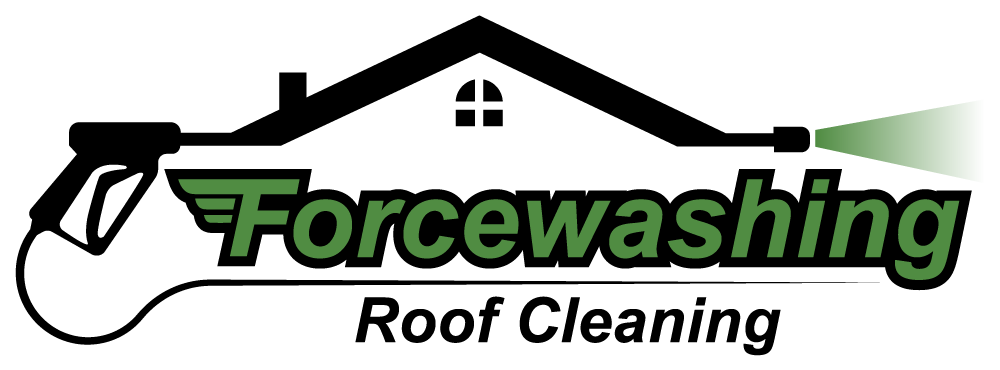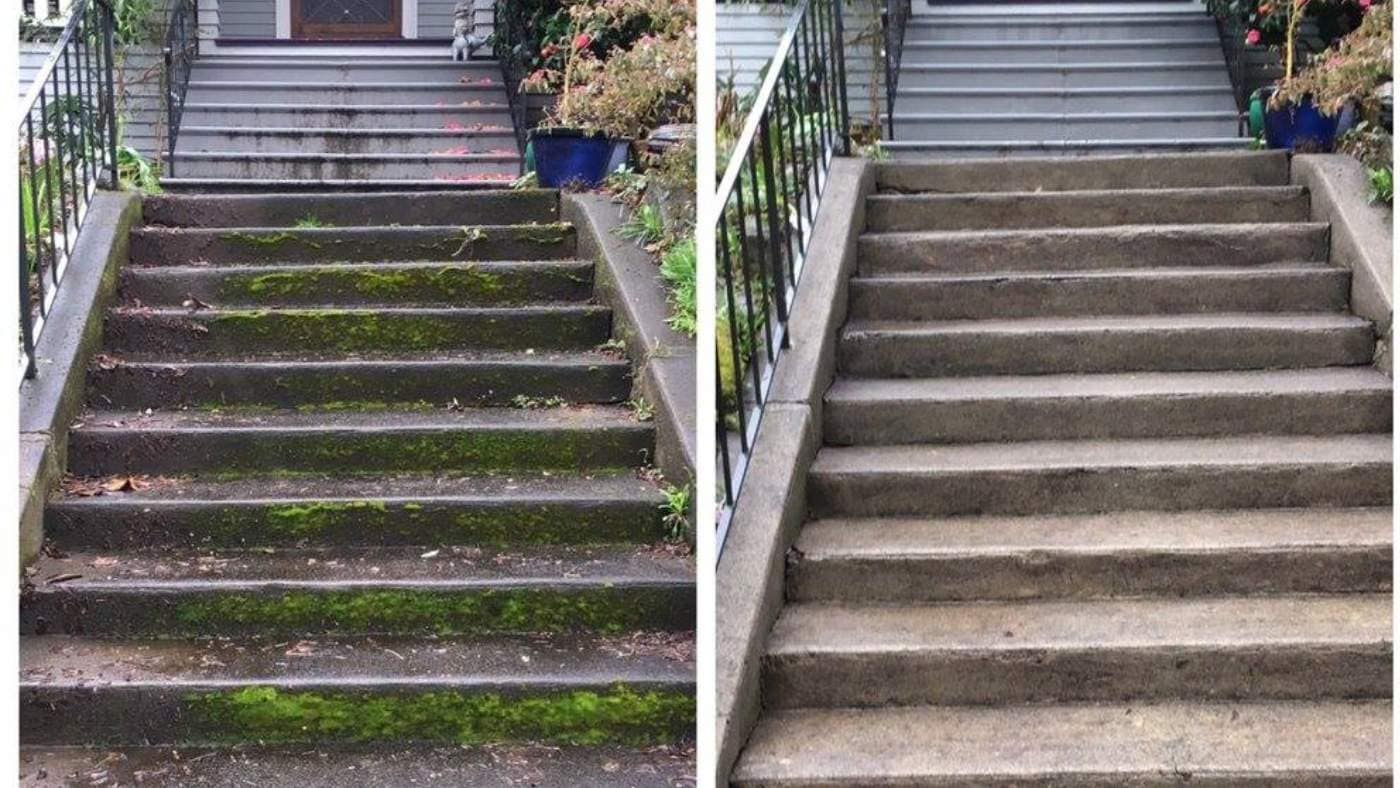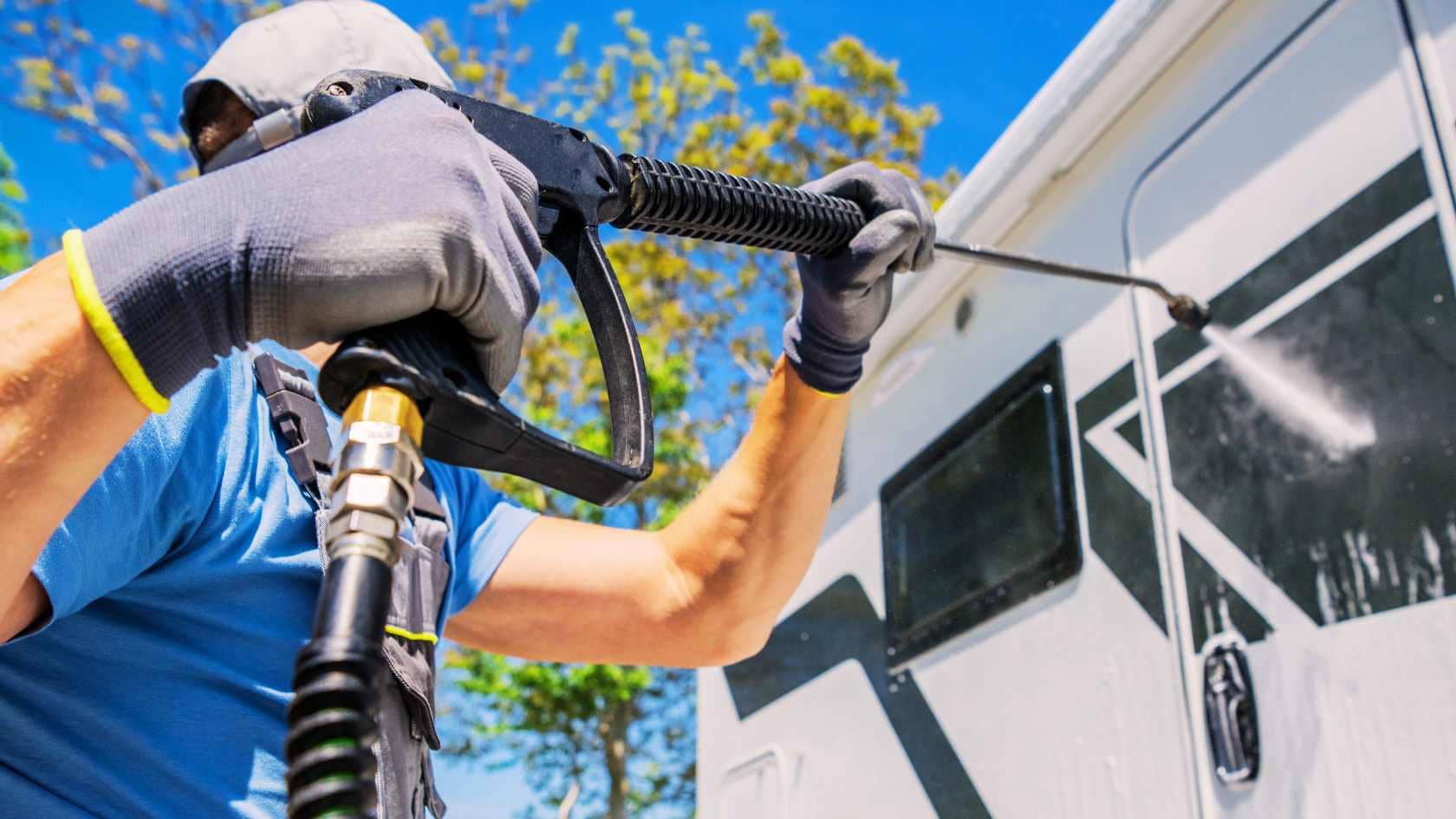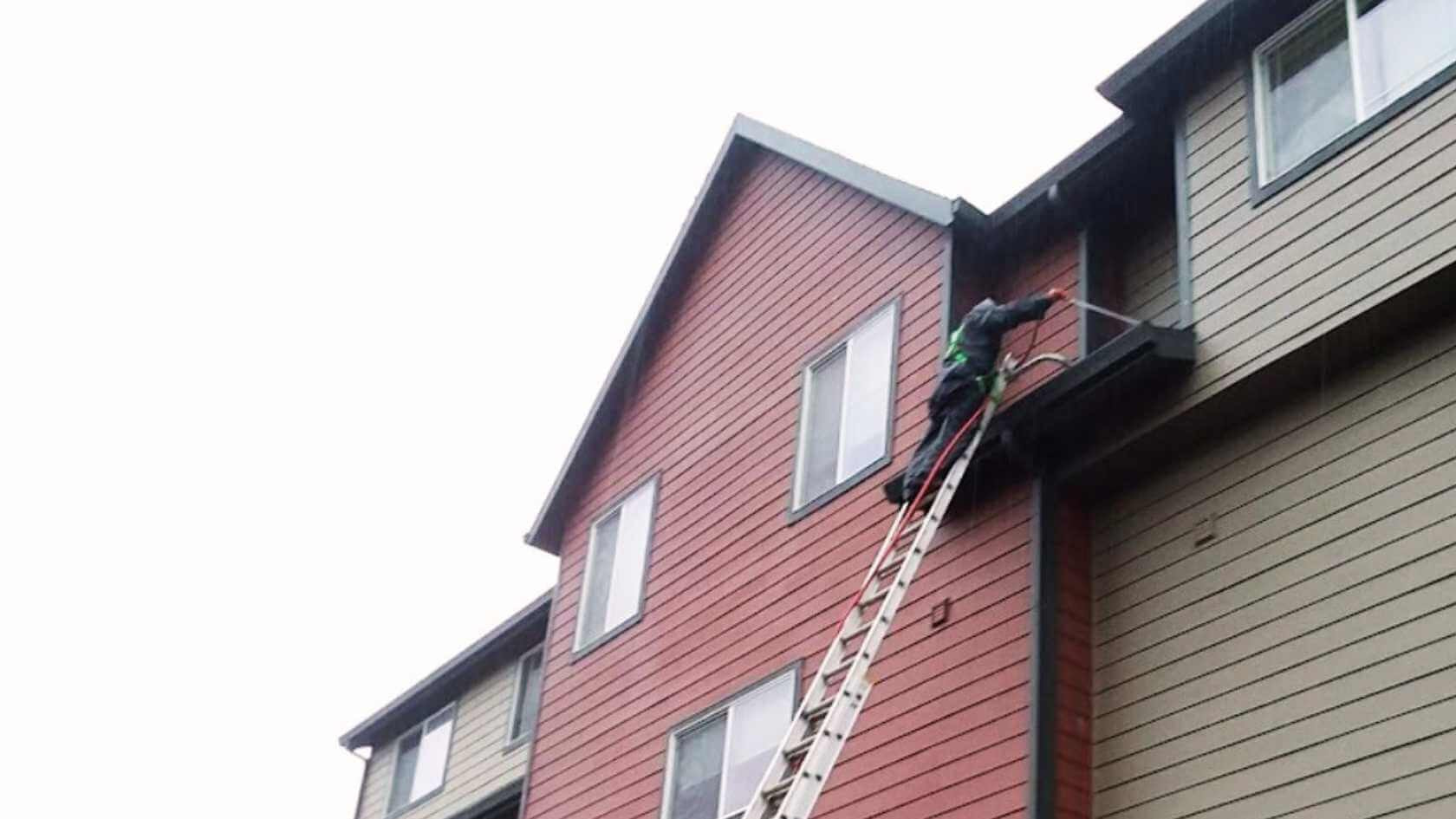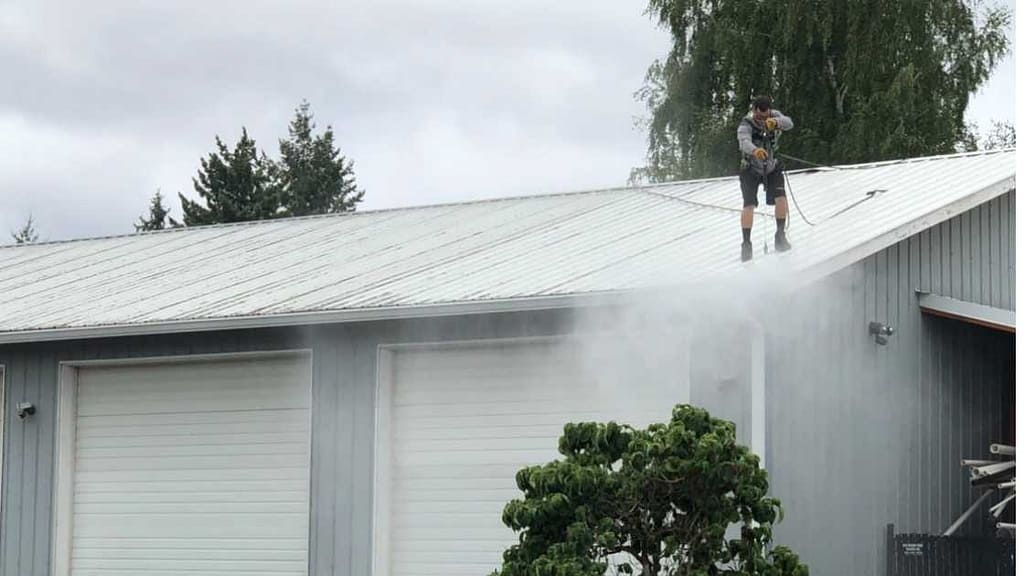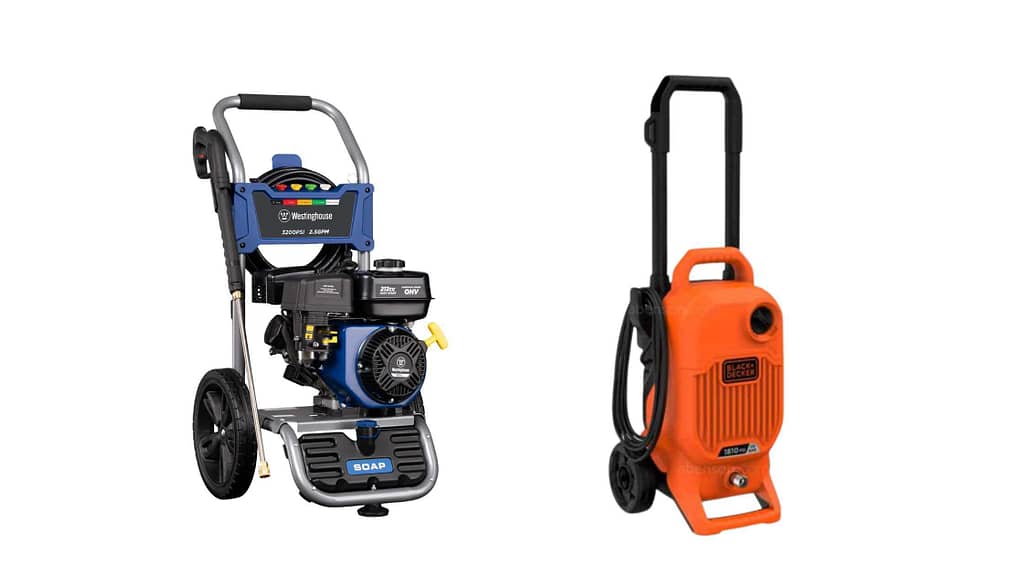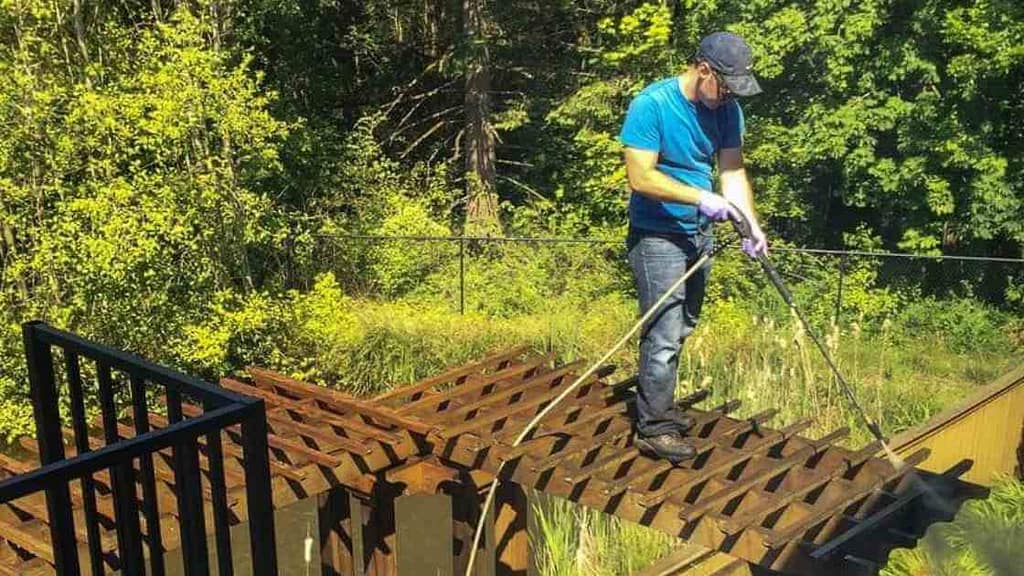Understanding the proper techniques and materials for cleaning can help restore their appearance and prevent further damage. In this guide, we’ll explore the best methods on how to clean concrete steps, from choosing the right tools and cleaning solutions to essential safety precautions. With the right approach, you can keep your concrete steps looking pristine while ensuring a safe environment for all who use them.
Why Cleaning Concrete Steps is Important
Cleaning concrete steps is crucial for several reasons, primarily focusing on safety and maintenance. Accumulated dirt, grime, and algae can create slippery surfaces, increasing the risk of slips and falls, which can be especially dangerous for children and the elderly. Regular cleaning not only enhances the aesthetic appeal of your home by providing a welcoming entrance, but it also helps prevent damage caused by mold and mildew, which can deteriorate the concrete over time. Furthermore, clean steps contribute to the overall upkeep of your property, reducing the amount of dirt tracked indoors and maintaining a tidy appearance. Ultimately, a well-maintained entrance can positively impact your property value, making it a worthwhile investment in the long run.
Read also: Does pressure washing damage concrete?
How to Clean Concrete Steps With a Pressure Washer
Essential Tools and Materials
Cleaning concrete steps with a pressure washer is an efficient way to remove dirt, grime, and stains. To ensure a successful cleaning process, gather the following essential tools and materials:
- Pressure Washer: Choose one with at least 2000 PSI for effective cleaning.
- Pressure Washer Nozzles: Use a 25-degree nozzle for general cleaning and a 15-degree nozzle for tougher stains.
- Cleaning Solution: Depending on the type of stains, you may need a concrete cleaner or a mixture of water and mild detergent. For tough stains, consider a specialized concrete degreaser.
- Stiff-Bristle Brush: Useful for scrubbing stubborn stains or areas that need extra attention.
- Safety Gear: Wear safety goggles, gloves, and non-slip footwear to protect yourself from debris and slippery surfaces.
- Hose: A regular garden hose may be needed for rinsing before and after pressure washing.
- Tarps or Drop Cloths: Protect surrounding areas from debris and overspray.
- Broom or Leaf Blower: To clear loose debris before you start.
Step-by-Step Guide to Cleaning Concrete Steps
Step 1: Gather Your Supplies
Ensure you have all the necessary tools and materials, including a pressure washer, nozzles, cleaning solution, a stiff-bristle brush, safety gear, and a broom or leaf blower.
Step 2: Clear the Area
Remove any furniture, plants, or obstacles near the steps. Use a broom or leaf blower to clear away loose dirt, leaves, and debris.
Step 3: Prepare the Pressure Washer
Set up your pressure washer according to the manufacturer’s instructions. Attach the appropriate nozzle (usually a 25-degree for general cleaning).
Step 4: Wet the Steps
Before applying any cleaning solution, lightly spray the concrete steps with water. This helps to loosen dirt and prepares the surface for cleaning.
Step 5: Apply Cleaning Solution
Mix your chosen cleaning solution according to the instructions. Apply it to the concrete steps using a sprayer or a bucket and brush. Focus on stained areas and allow the solution to sit for about 10-15 minutes to penetrate the grime.
Step 6: Scrub Stubborn Stains
For tough stains, use a stiff-bristle brush to scrub the affected areas. This will help break down the grime before pressure washing.
Step 7: Pressure Wash the Steps
Using the pressure washer, start from the top of the steps and work your way down. Maintain a consistent distance (about 12-18 inches) from the surface to avoid damage. Use sweeping motions and overlap your strokes to ensure thorough cleaning.
Step 8: Rinse Thoroughly
After pressure washing, rinse the steps with clean water to remove any remaining cleaning solution and debris.
Step 9: Allow to Dry
Let the concrete steps dry completely before placing any objects back on them. This may take a few hours depending on the weather.
Step 10: Regular Maintenance
To keep your concrete steps looking their best, consider a regular cleaning schedule, especially after heavy use or in rainy seasons.
How Often Should You Clean Them?
The frequency of cleaning concrete steps depends on various factors, but here are some general guidelines:
- High Traffic Areas: If your concrete steps are frequently used (like those leading to a front door), aim to clean them every 1-2 months to prevent dirt buildup and stains.
- Seasonal Cleaning: In climates with heavy rain, snow, or leaf fall, consider cleaning at the start of each season. This helps remove organic debris and prevent mold or mildew growth.
- After Major Weather Events: Clean your steps after heavy rain, snow, or storms to remove debris and prevent slippery conditions.
- Visible Stains or Dirt: If you notice stains, grime, or algae, clean them immediately to prevent long-term damage.
- Annual Deep Clean: At least once a year, perform a thorough deep clean using a pressure washer or specialized cleaning solutions to maintain the steps’ appearance and integrity.
Final Thoughts
Cleaning your concrete steps is essential for both safety and aesthetics. Regular maintenance not only enhances their appearance but also helps prevent slips and falls caused by dirt, grime, and algae. By following a structured approach—gathering the right tools, clearing the area, applying appropriate cleaning solutions, and using a pressure washer—you can effectively restore your steps to their best condition.
Remember to assess the frequency of cleaning based on usage and environmental factors, ensuring that they remain in good shape year-round. With a little effort and care, your concrete steps can continue to serve as a welcoming entrance to your home while remaining safe and inviting for everyone.
